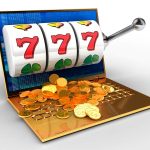When I first navigated through https://stoiximatikesxenes.gr/kalyteres-etaireia/, I was immediately drawn to the craps tables. Unlike roulette or blackjack, craps combines rapid-fire action with layered strategy, offering an intricate array of betting options with dramatically different house edges. Understanding the statistical landscape of the craps table is crucial for any player aiming to maximize potential returns while managing risk. While some bets approach near-even odds, others carry extremely high volatility, and recognizing these distinctions separates informed, strategic players from those relying purely on intuition. Over time, I have observed that mastering craps is less about memorizing rules and more about interpreting probabilities, understanding betting interactions, and structuring wagers strategically to exploit favorable odds.
Understanding the Basics of Craps
Objective and Flow of the Game
Craps is played with two dice, and the goal is to predict the outcomes of rolls through a variety of wagers. The shooter rolls the dice, and the initial roll, known as the “come-out,” establishes a point. Subsequent rolls aim to either hit the point again before rolling a seven, or for specific one-roll bets, predict immediate outcomes.
Key Terms
- Pass Line: A bet on the shooter winning. Wins immediately on 7 or 11 during the come-out roll, loses on 2, 3, or 12. After the point is established, wins if the point is rolled before a seven.
- Don’t Pass Line: A bet against the shooter. Wins on 2 or 3, loses on 7 or 11 during the come-out. 12 results in a push. After the point, wins if a seven rolls before the point.
- Come/Don’t Come Bets: Similar to Pass/Don’t Pass but applied after the point is established.
- Odds Bets: Additional bets backing Pass, Don’t Pass, Come, or Don’t Come wagers. Pays true odds, meaning no house edge.
Understanding the structure of these bets is essential before considering probability and house edge analysis.
Bets with the Best Odds
Pass Line with Odds
The Pass Line bet is one of the safest and most fundamental wagers. Its house edge is only 1.41%, which is relatively low for casino games. Adding odds behind the Pass Line bet-allowed in most casinos-eliminates the house edge on that portion of the wager entirely. True odds depend on the point: for example, 4 or 10 pays 2:1, 5 or 9 pays 3:2, and 6 or 8 pays 6:5.
Don’t Pass with Odds
Betting against the shooter can be slightly more favorable. The Don’t Pass Line carries a house edge of 1.36%, and taking odds reduces it further. The psychological challenge is greater because you are effectively betting on the shooter to lose, which feels counterintuitive in a social table environment, but mathematically it is a high-value wager.
Place Bets on 6 and 8
Placing wagers on the 6 or 8 numbers yields relatively low house edges of 1.52% with standard payouts (7:6). These are consistent, medium-risk bets that integrate well into balanced session strategies.
Taking Full Advantage of Odds
Many beginners overlook the power of odds bets because they require additional capital behind the main line bet. From a mathematical standpoint, maximizing allowed odds is the single most effective way to reduce expected losses and approach breakeven probabilities on individual wagers.
Bets with Moderate to Poor Odds
Come and Don’t Come
Come and Don’t Come bets mirror Pass and Don’t Pass but are applied after the point is set. House edges are comparable: 1.41% for Come, 1.36% for Don’t Come. While strong mathematically, they involve additional complexity in tracking points and avoiding overexposure during streaks.
Place Bets on 5 and 9
Placing on the 5 or 9 carries a higher house edge of 4%, making these moderate-risk bets. The payout is 7:5, and the likelihood of the number hitting before a seven is less favorable than 6 or 8. Incorporating these into a session should be done cautiously, balancing potential gains with bankroll volatility.
Field Bets
Field bets are one-roll wagers covering multiple outcomes with uneven probabilities. While appealing for quick results, house edges vary: approximately 2.78% if 2 pays double and 12 pays triple, or up to 5.56% in other structures. The attraction lies in immediate payoff rather than sustainable advantage.
Bets with the Worst Odds
Any Seven
Betting on Any Seven is extremely risky, with a house edge of 16.67%. The probability of rolling a seven is high compared to individual point numbers, but the payout of 4:1 is insufficient to justify the risk. Beginners are often drawn to the potential payoff but underestimate the long-term disadvantage.
Hardways
Hardway bets involve rolling doubles of 4, 6, 8, or 10 before a seven or the corresponding easy way occurs. The house edge ranges from 9% to 11%, depending on the number. While visually engaging and dramatic during play, these wagers are statistically poor for long-term strategy.
Proposition Bets
One-roll proposition bets, such as Any Craps (2, 3, or 12) or specific doubles, have house edges exceeding 11%. While payouts are tempting, variance is extreme, and bankroll swings are severe. These bets should be reserved for small, recreational wagers rather than core strategy.
Psychological Impacts of Betting Choices
Social Pressure and Table Dynamics
Craps is uniquely social. The excitement of the table can influence decision-making, pushing players toward flashy, high-risk bets with poor odds. Recognizing these pressures allows disciplined players to maintain strategic focus, favoring bets with the lowest house edge.
Streak Illusions
Players often perceive patterns in dice rolls, believing in hot or cold streaks. In reality, each roll is independent. Misinterpreting streaks can lead to repeated placement on high-edge bets, rapidly eroding bankroll. Maintaining mathematical perspective is critical.
Managing Excitement and Risk
Successful craps play combines probability understanding with emotional regulation. Engaging with the social energy of the table is part of the experience, but separating excitement from decision-making ensures long-term sustainability.
Combining Bets for Strategic Advantage
Base Bets with Odds
A common professional approach is to place Pass or Don’t Pass bets and immediately take full odds. This combination maximizes low-house-edge exposure while leaving capital for moderate-risk supplemental wagers like Place 6 or 8.
Balanced Portfolio Approach
Players can diversify: allocate the majority of bankroll to Pass/Don’t Pass with odds, a smaller portion to Place 6 and 8, and occasional minimal speculative bets on Field or one-roll propositions for entertainment. This strategy maintains bankroll stability while allowing participation in dramatic moments.
Bankroll Allocation and Session Management
Segmenting bankroll into session units, capping maximum wagers per bet, and defining stop-loss limits prevents catastrophic losses. Professional players emphasize consistency over chasing single-session wins.
Craps in Online Platforms
RNG vs. Live Dealer
Online craps can be RNG-based or live dealer. RNG tables simulate dice outcomes with independent probabilities. Live dealer tables replicate physical mechanics, including shooter momentum and table interaction. Both allow application of statistical strategies, but live environments offer psychological and social dynamics akin to land-based casinos.
Platform-Specific Edge Considerations
Different online casinos may have slight variations in payout ratios, maximum odds allowed, or betting limits. Platforms like https://stoiximatikesxenes.gr/kalyteres-etaireia/ provide clear rules and transparency, which is essential for disciplined, strategic play. Understanding platform-specific constraints informs optimal bet sizing and sequence planning.
Digital Tracking Tools
Online interfaces often include bet history, probability calculators, and statistical overlays. Leveraging these tools allows players to monitor bankroll exposure, adjust wagers, and maintain disciplined adherence to low-house-edge strategies.
Expert Tips for Craps Players
Focus on Low-House-Edge Bets
Prioritize Pass/Don’t Pass and Take Odds. Minimize exposure to one-roll propositions unless for recreational purposes.
Maximize Odds Multipliers
Always take maximum allowed odds behind line bets. This reduces effective house edge and enhances expected value over time.
Limit High-Variance Bets
Avoid Any Seven, Hardways, and high-proposition bets unless placing very small, recreational wagers. Understanding volatility prevents rapid bankroll erosion.
Session Planning
Define session length, profit targets, and stop-loss points. Short, focused sessions with disciplined bankroll management improve both sustainability and enjoyment.
Observe Table Flow
Whether live or online, observing shooter behavior, streak tendencies, and table energy can inform timing of supplemental wagers, even if it does not alter statistical outcomes.
Conclusion
Craps offers a dynamic landscape where informed betting decisions significantly impact session sustainability. Bets like Pass/Don’t Pass with full odds provide the best statistical advantage, while flashy one-roll propositions and Any Seven wagers carry extreme house edges and high volatility. Platforms like https://stoiximatikesxenes.gr/kalyteres-etaireia/ provide transparent online environments where disciplined players can combine probability insight, bankroll management, and strategic diversification to maximize session longevity and enjoyment. By focusing on low-house-edge bets, understanding probability, and maintaining emotional control, players can approach the craps table with confidence, methodically balancing risk and reward while navigating the excitement and complexity that makes craps one of the most compelling casino games.





